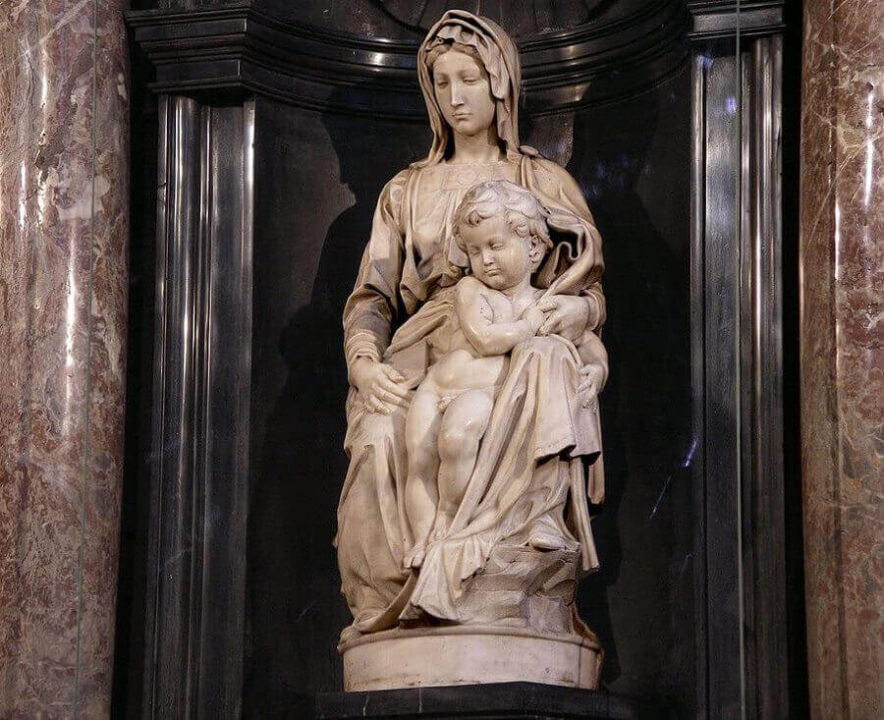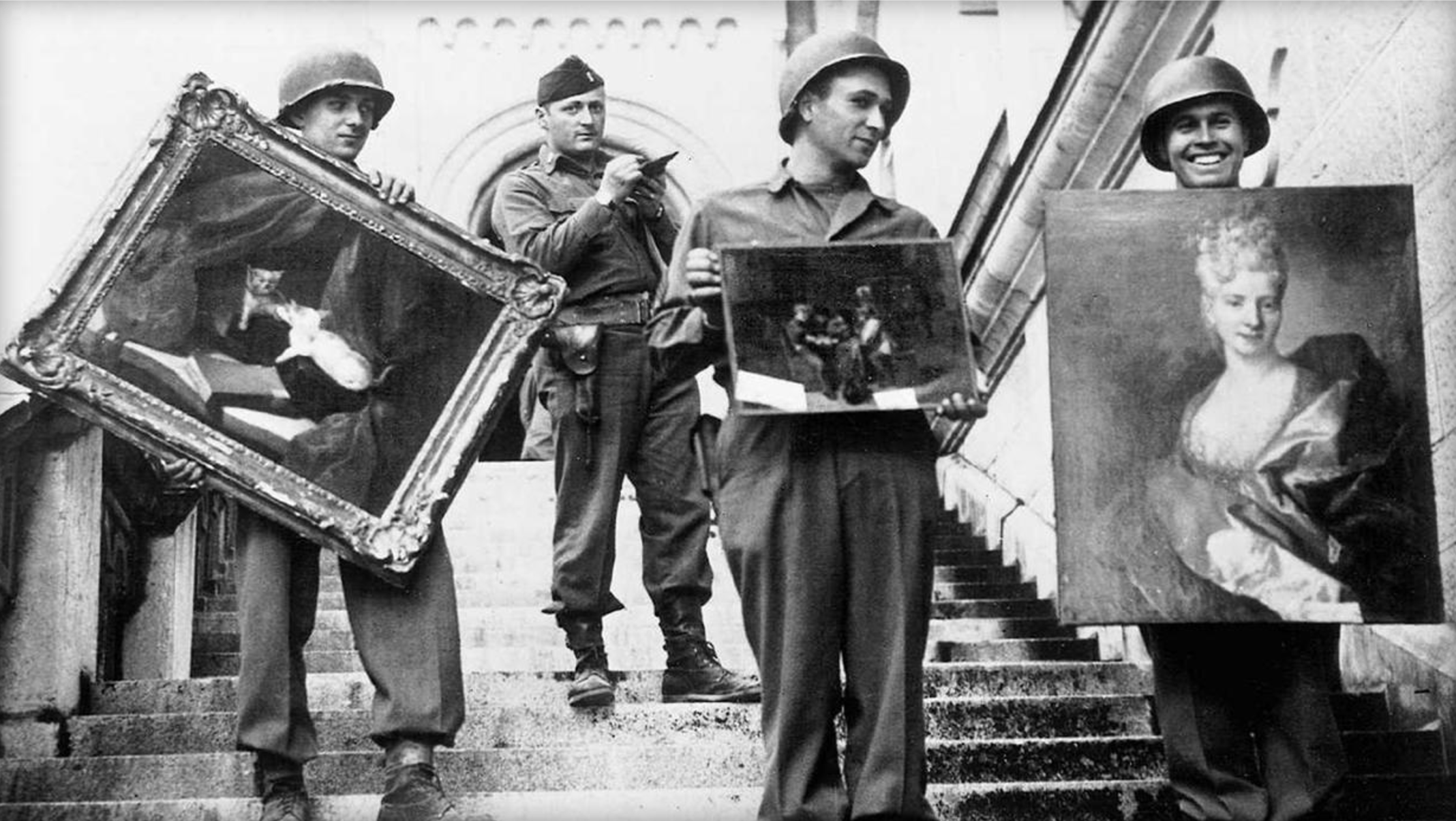On February 7, 2014, another World War II-era movie hit the box office. However, despite an intriguing plot and a generous cast of talented actors, the film received mediocre reviews. In fact, it seemingly faded into oblivion shortly after leaving the theaters. It wasn’t until I stumbled across The Monuments Men on a streaming platform a couple of years ago and decided to give it a chance that I even heard of its name. After watching it, I could not believe that the story had not garnered more initial interest. A few weeks ago, I picked up a copy of the book on which it was based and found that the real story was even more complex than the film. One might wonder, with the general verve surrounding war movies these days, why this particular film never saw its heyday.

It may have been due to its surprising subject matter. Although it is set in World War II, The Monuments Men does not satiate its viewers with adrenaline-pumping scenes, dramatic pathos, or bloody battles. It does not tell, like another Matt Damon film, of a young soldier lost behind lines, or of winning a battle against egregious odds. Instead, The Monuments Men tells of a fight that took place behind the scenes. It is the true story of a group of brave men and women, a mix of civilians and soldiers, who were tasked with an incredibly important mission during the war: preserving European culture. Specifically, their task was to recover thousands of pieces of stolen artwork that had been taken by the Third Reich throughout the course of the war.
Aside from being fascinating in its own right, the story of the Monuments Men also points to a deeper reality: the fact that art is worth saving and even worth dying for. Hitler waged war on the dignity of humankind. The Monuments Men responded by saving its art. Admittedly, it sounds like something from a fictional story. It’s easy to imagine putting one’s life at risk to save a person. In some cases we might even risk our well-being for a beloved pet. But to die for a painting? Even for art-lovers, this sounds like a tall order. However, the Monuments Men were not fictional. They were real, as was their decision to put their lives on the line to preserve some of the greatest works of Western Civilization. Their conviction sheds light on the vital role that art has in the preservation of culture and universal human values.
Man is not only made in the image of God; he also makes in the image of God.
Why Art?
Why did Hitler go after the art in the first place? What was so important about it that motivated him to steal thousands of pieces and hide them throughout Europe? After all, Hitler did not just ravage cities. He looted them. Did this mastermind simply have a penchant for the rare and valuable?
On one hand, the answer is yes. An artist himself, Hitler was deeply moved by the art of the Western world. Part of his desire to collect art can probably be boiled down to this. But Hitler also knew that art had a vital connection to European culture—the very culture he was trying to dominate. The values of a culture are manifested in that culture’s art. Therefore, by better understanding the role and dignity of art, we can better understand why Hitler was so bent on possessing it.
C.S. Lewis wrote that the imagination is the organ of meaning. By this, he meant that the imagination is what allows us to understand meaning. We cannot make judgments about something if we don’t understand its meaning. Since the imagination is the tool for grasping meaning, this means the imagination is a prerequisite for knowing truth. Centuries before C.S. Lewis, St. Thomas Aquinas argued similarly that only through the power of the imagination can we understand reality. If we lose the faculty of our imagination, we lose our access to meaning and subsequently, to reality itself. Therefore, since art communicates directly to the soul by means of the imagination, art is absolutely vital in order to grasp the meaning of the world and its objective value.
But this fact alone might not be enough to make art worth dying for. After all, the destruction of old art does not hinder the creation of new art. The conviction of the Monuments Men comes into clearer focus when we consider the dignity that each work of art has as a unique manifestation of man’s dignity. Man was created in the image of God, who is a creator. Thus, not only in his being but also in his actions, man mirrors God’s own nature as creator. Man is not only made in the image of God; he also makes in the image of God.
The works of our imagination therefore not only enable us to understand reality; they enable us to add to it in some way. When we create, something genuinely new and unrepeatable comes into being. Nowhere is this seen more clearly than in the creation of a human person. But all of our art is a sign of this reality. Our art takes the raw materials of God’s creation and “makes them anew,” casting them in new light. When our creations are aligned with truth and goodness, they become unique contributions to the ongoing creation of the world. Good art is, therefore, a vital aspect and symbol of man’s inherent dignity.
Throughout history, art has always been both revered and feared as the heartbeat of a culture.
On some level, Hitler knew this. He intuited that art was the lifeblood of meaning for European culture. This is why, in addition to curating his own private collection, he put a plan in place to destroy the art were it ever in danger of being recovered. Early in his campaign, Hitler planned to make his hometown of Linz, Austria into the center for arts in his new empire. However, on March 19, 1945, seeing that his war efforts were failing, Hitler issued the “Nero Decree,” which called for the destruction of all the Nazi’s resources.1 This included the stolen art. Although Hitler seemingly changed his mind immediately before his suicide, dispatching a desperate order to preserve the art instead, many of his officers ignored his request and proceeded laying the plans to demolish it.
The Control of a Culture
Hitler’s paradoxical relationship with the stolen art makes more sense when we remember that his entire goal was to impose on Europe a new worldview, one which contrasted starkly with the values of Western civilization. Hitler’s Germany sought to redefine values, leaving behind long-standing ideas about the inherent dignity of the human person. In order to do this, Hitler needed to control the vehicles of meaning that the Western world treasured. It is fascinating that Hitler’s plan to reconstruct the western world included confiscating its art; and yet it makes perfect sense. If you want to master a culture, you must deconstruct its values. If you want to deconstruct its values, you must control its art.
In this endeavor, Hitler was simply following in the footsteps of a long line of tyrants who saw art as an integral part of their mastery over a culture. During the French Revolution, the previous century’s art was condemned to destruction as recklessly as heads were condemned to the guillotine.2 Plato, who was not a tyrant, advocated for the banishing of poets from his ideal state. Throughout history, art has always been both revered and feared as the heartbeat of a culture. The art of the Western world in particular conveys a sublime set of ethical, religious, and philosophical foundations that have been tested and proved time and again, throughout history.
Hitler knew that his dominion over European culture would not be complete unless it included dominion over its art. If Dostoyevsky was right that “beauty will save the world,” then the Monuments Men were right that when the world is in danger, we must save its art.
Their Legacy
The story of the Monuments Men was not all inspiration and hope. While most of them survived the war, some did not live to tell their tales. Oklahoma native, Captain Walter Huchthausen, was shot down in Western Germany while on mission to recover a stolen art piece.3 He was not the only one. Major Ronald Edmund Balfour died in northwestern Germany in an attempt to rescue sculptures from a ruined church.
While these two men did not live to see the fruits of their efforts, their stories live on in the pieces they saved. Among the works saved by the Monuments Men are the Ghent altarpiece, the Mona Lisa, Michelangelo’s Madonna of Bruges, Rembrandt’s “The Night Watch,” and the original manuscript of Beethoven’s Sixth Symphony. The fact that these pieces still exist today reminds us of a time in history when we got it right. It was a time when nations who were in the middle of a war did not wait until the dust had cleared in order to clean up their mess.4 Instead, they worked in the moment to mitigate its detrimental effects on their culture. Recognizing with keen foresight that they were at risk of losing some of the world’s greatest conduits of meaning, they banded together to protect them.
In 1945, after Hitler issued his Nero Decree, the Monuments Men raced against time to find the remaining missing pieces. After a long search, their efforts were rewarded. Hordes of priceless works were found in places such as Neuschwanstein Castle and a salt mine in Altaussee, Austria. Among the pieces buried in the salt mine was Michelangelo’s famous Madonna of Bruges, the only one of Michelangelo’s sculptures to ever leave Italy during his lifetime. In the statue, the Virgin Mary looks out with a pensive glance at the world. Her left hand embraces her infant son. Her right hand holds the Scriptures. The somber expression on her face suggests that she can see ahead of time the suffering that her son will endure for the sake of the world. Yet she offers him anyway.

The film beautifully portrays the moment of the statue’s recovery, highlighting with palpable reverence the look on each man’s face as he beholds the sculpture. Even if they don’t fully understand why, each one knows that this piece of art is more than just a testament to its creator’s skill. The statue incarnates a deep and objective meaning, a truth that calls to all men, regardless of country or creed.
Robert M. Edsel, the author of The Monuments Men, observed that when we wander through the Met or the Louvre we are not wont to consider what others have sacrificed in order that we might behold these mighty works.5 But it is my hope that by sharing their story, we will all be inspired to take art seriously, whether in creating it, preserving it, or (most importantly) appreciating it. For it is in appreciating their art that we keep its meaning alive. I will end with the words from Paul Sachs, Associate Director of Harvard’s Fogg Art Museum, who addressed the future members of the Monuments Men on December 20, 1941.
If, in time of peace, our museums and art galleries are important to the community, in time of war they are doubly valuable. For then, when the petty and the trivial fall way and we are face to face with final and lasting values, we . . . must summon to our defense all our intellectual and spiritual resources. We must guard jealously all we have inherited from a long past, all we are capable of creating in a trying present, and all we are determined to preserve in a foreseeable future. Art is the imperishable and dynamic expression of these aims. It is, and always has been, the visible evidence of the activity of free minds. Therefore be it resolved: That American museums . . . will be sources of inspiration illuminating the past and vivifying the present; that they will fortify the spirit on which victory depends.
1 “Hitler’s ‘Scorched Earth’ Decree (Nero Decree) (March 19, 1945) and Albert Speer’s Response (March 29, 1945),” at GHDI, www.ghdi.ghi-dc.org.
2 Parzinger, Hermann, “Cultural Heritage under Attack: Learning from History,” at Getty, at www.getty.edu.
3 Allen, Silas, “Oklahoma-Born Monuments Man Died Protecting Cultural Treasures In World War II,” at The Oklahoman, 6 February 2014, at www.oklahoman.com.
4 Edsel, Robert M., The Monuments Men, (New York: Hachette Book Group, 2009), 2.
5 Edsel, The Monuments Men, Author’s Note, xiii.
6 Edsel, The Monuments Men, 20-21.
